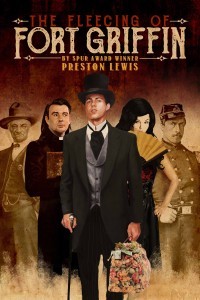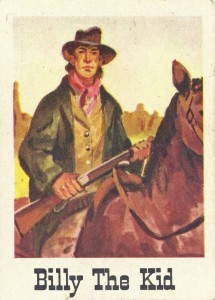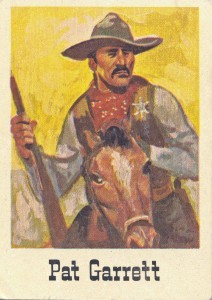Preston Lewis's Blog, page 7
May 3, 2016
History on the House
We spent this past weekend attending the Lone Star History Conference at the Texas Ranger Hall of Fame and Museum in Waco. I’ve attended a lot of history programs over the years but this would rank at the top in terms of entertaining programs and, more importantly, the concept of taking history to the public.
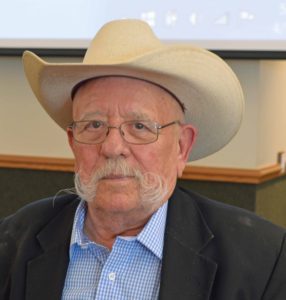
Bob Alexander, organizer of the Lone Star History Conference
The conference is organized in alternating years by author Bob Alexander in conjunction with the Texas Ranger Museum. Like me, Bob has attended a lot of history conferences, but over the years he realized the audience was generally an older crowd that could afford the time and the cost to attend.
Wanting to change that and attract and intrigue a younger crowd with Texas history, he started the Lone Star History Conference with the goal of making it free—including the meals—to the public. Consequently, he raises the money and finds the sponsors to provide a free experience to all comers.
On top of that, Alexander, a retired special agent for the U.S. Treasury Department, organizes an entertaining program revolving around the Texas Ranges and law enforcement. Speakers this past weekend included the first female lieutenant in the Texas Rangers, the state historian of Texas, the historian of the U.S. Marshals Service, the author of a definitive biography on Texas Ranger Frank Hamer, the assistant chief of the Texas Rangers and several authors speaking on the historic and contemporary Texas Rangers.
Overall, it was an exceptional program. Though my tastes generally run to the historic, the talks by Texas Ranger Lt. Wende Wakeman and Assistant Texas Ranger Chief Frank Malinak on the contemporary challenges faced by the legendary law enforcement organization were among the most entertaining of the Friday-Sunday program.
So, kudos and thanks to Bob Alexander, whose historic works include Bad Company and Burnt Powder: Justice and Injustice in the Old Southwest and Whiskey River Ranger: The Old West Life of Baz Outlaw, for a great educational weekend.
April 4, 2016
Hard Times
The Redemption of Jesse James is now back in print and available in both hardback and e-book format from Amazon. Never fond of Jesse James as a historical figure, I made him a peripheral character in this historical novel and focused on life in Washington County, Arkansas, during the Civil War.
Since my Lewis ancestors lived in Washington County at that time, I had done some genealogical research in northwest Arkansas and was intrigued by the period’s hardships and perils. It didn’t matter a family’s politics as each home stood in harm’s way from both the Union and Confederate sides. This is how Redemption begins:
I never much cared for Jesse James. He was about as likable as a rabid mongrel, but sorry though he may have been, he was downright lovable compared to his momma. Now there was a cur of a woman. She was rough as a cob and twice as ugly, which is a bad thing to say about a man’s momma, even if it’s true.
I never took to her and she never took to me, though she did take out after me a couple times, once with a shotgun and once with a frying pan. Some said Jesse James finally ran me out of the Ozarks, but that just wasn’t true. My conscience and his momma are what sent me packing west.
The truth of the matter is I might never have met any of the James family had it not been for Abraham Lincoln. Old Abe—not some cannonball over Fort Sumter and not slavery—brought on the War Between the States, and the war brought out the meanness of folks in the Ozarks.
Up until then the Ozarks was as near to heaven as a young boy could find, short of getting into some girl’s sack drawers. There were streams to fish, woods to hunt, rocks to throw, trees to climb, and places to hide. Of course, my folks didn’t see it that way. To them there were fields to plow, cows to milk, hogs to feed, wood to chop, water to tote and other innumerable chores to do.
If you are interested, you can learn more by visiting Redemption’s Amazon page.
March 26, 2016
Bluster’s Last Stand
Last night at a quarter to midnight, I finished the first draft of the fourth volume of The Memoirs of H.H. Lomax, a project that has preoccupied me for the past four months, but especially the last six weeks. I typically go through three drafts with the first being the most difficult because I have nothing but a blank screen in front of me.
Consequently, the first draft is painful, just getting something coherent down. With the second draft, I work on connecting loose story threads, cutting the verbiage and organizing a “bible” that makes sure my characters are consistent in appearance, expression and habits from chapter to chapter. The second draft is work, but not pain. The third draft is fun as I work on strengthening the verbs, polishing the language and resolving any plot issues.
The first draft of the new manuscript came in at 487 pages and 142,000 words. By the time it’s done, I figure it will be in the 120,000-word range. So, I have editing work to do.
In this volume, protagonist Lomax encounters George Armstrong Custer and accompanies him to the Little Bighorn, where their trails part. I read close to 60 books on Custer and the battle, looking for facts and individuals I could incorporate into the historical novel. For the Lomax series, I like odd facts, those not generally utilized in fiction. For this book, the fact that intrigued me most was the number of rattlesnakes the cavalry encountered on the march from Fort Abraham Lincoln to the Little Bighorn. So, rattlesnakes will play a role in my version of Custer’s Last Stand.
For the title, I plagiarized myself and am calling it Bluster’s Last Stand, a title I previously used with great success on a Spur Award-winning story for True West on the Battle of Yellow House Canyon. The title sums up my assessment of the commander at the battle. Custer is one of those historical figures that people either love or loathe. I fall in the latter category.
Bluster’s Last Stand is scheduled for publication next year and will bring a new set of Lomax adventures to print two decades after his previous one about the gunfight at the O.K. Corral appeared in print. It’s fun to work once again with my old friend Lomax, even on a first draft.
February 17, 2016
Redemption Redux
The cover is now finalized and I’ve completed the final proofing, so The Redemption of Jesse James should be back in print and in e-book versions in a few weeks. One of the nice things about getting the books in The Memoirs of H.H. Lomax back in circulation is that it has allowed me to reconnect with the original editors—Elizabeth Cosgrove and Pam Lappies—at Book Creations Inc., which packaged the series for Bantam.
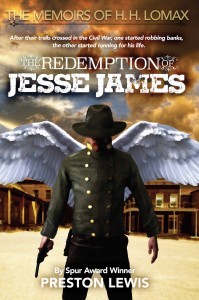
New Cover

Original Cover
After learning Lomax was returning to print, Elizabeth wrote, “That’s terrific news about Lomax, whom I occasionally mention or even quote to this day. He’s more real to me than Billy the Kid or Doc Holliday or the James boys. My favorite guy. And, of course, Pam and I adored working with you and all the rest of the crazy characters you brought into our humdrum BCI lives (the cat Satan comes to mind).”
I’ll share the editorial story of Satan the cat, who appears in Mix-Up at the O.K. Corral, in a later post, but suffice it to say it was such a pleasant experience working with the BCI crew that I dedicated Mix-Up to them all—Elizabeth, Pam, Sally Smith and Paul Block.
One of the reasons Lomax was so likable is that he had a knack for stumbling into things on the periphery of history. For instance, everyone knows Jesse James was shot in the back while straightening a picture on the wall. What most people don’t realize is who bumped the wall to begin with and left the frame askew. Enter Lomax!
Just as Lomax is not your typical western hero, the new cover of Redemption is atypical for a western. Fact is, you won’t find many shoot-’em-ups with angel wings on the cover. The publisher’s thought was that the insinuation of the supernatural might get readers to purchase a book they might not otherwise read. We’ll see how it works. When I first saw the Redemption cover schematic, I was undecided and reluctantly okayed it, requesting only that the angel’s attire be changed from cowboy duds to a Confederate uniform since the bulk of the novel is set in Civil War Arkansas. Since then, the cover has really grown on me. I’ve posted both side by side so folks can decide for themselves whether they prefer the new or the original cover.
January 15, 2016
Six-Pack
Here’s the next stage of the cover design for The Fleecing of Fort Griffin, a western caper scheduled for release later this year by Wild Horse Media in Fort Worth. There may be a few tweaks, but this will be the general look of the new cover.
As things now stand with the tentative Wild Horse publication schedule, six of my books will be out this year, including three reprints and three originals. Fleecing is one of the originals.
The other two will be young adult novels based upon actual animals from the history of the Old West. First one up will be about the camel born at sea coming to Texas as part of the War Department’s Camel Corps in the years prior to the Civil War. The second will be about the famous Wyoming rodeo bucking horse Steamboat. Both books will be written from the viewpoint of the animals, much like Robert Lawson’s Ben and Me: A New and Astonishing Life of Benjamin Franklin as Written by His Good Mouse Amos, one of my favorite books as a youngster.
Reprints will include the second and third volumes in the Memoirs of H.H. Lomax series, starting with The Redemption of Jesse James and Mix-Up at the O.K. Corral, which received a recent flattering reader review on Amazon.com. Scheduled for 2017 is the tentatively titled Bluster’s Last Stand, the next original novel in the Lomax series. It will interject Lomax into the events leading up to Custer’s downfall at the Battle of the Little Bighorn. If only Custer had listened to Lomax, things might have turned out better for the Seventh Cavalry!
The other reprint scheduled for publication this year will be The Lady and Doc Holliday, my first historical novel. Lady is based on the legend of Lottie Deno in Fort Griffin, Texas, in the late 1870s.
It will be a busy (and fun) year!
December 5, 2015
Seatwork
When the kids were young and we would ask them what they did in school that day, they would often answer “nothing, just seatwork.” Now that I am retired, I have plenty time for writing or seatwork, as I have come to call it.

Cover Concept
Generally, I aim for 10 or more pages a weekday. So, after you have spent that much time staring at a computer screen doing seatwork, it’s always pleasing to see a visible manifestation of your work with the arrival of a cover concept.
This is the working cover design for The Fleecing of Fort Griffin, the story of a passel of swindlers who venture to West Texas to con an English baron out of the satchel full of money he plans to use to start a buffalo ranch.
It’s a fun story with a lot of oddball characters, all with larceny in their hearts. The book will be out next year.
November 29, 2015
Billy the Who?
Nearly everyone has heard of the American folk legend Billy the Kid, but I daresay few today have heard of Walter Noble Burns.
The fact is, however, that without Walter Noble Burns few Americans would likely know about Billy the Kid today.
By the turn of the 20th century, the story of Billy the Kid had pretty much waned as a topic of interest in popular culture. Few serious academic historians cared about Billy’s story, which had been relegated to the realm of tawdry dime novels rather than serious history. While a few regional historians, primarily Maurice Garland Fulton of the New Mexico Military Academy, had begun to research the Lincoln County War in the 1920s, the topic was generally beneath the dignity of serious academic historians.
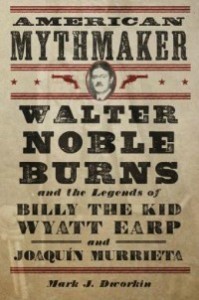
American Mythmaker Cover
Then came Walter Noble Burns, a Chicago newspaperman who picked up the Kid’s trail in 1923 while visiting New Mexico and interviewing various people who remembered Billy the Kid and his exploits some four decades after they had occurred. Like many good newspapermen, Burns never let the facts get in the way of a good story and in 1926 published The Saga of Billy the Kid.
A rip-roaring tale of Billy the Kid, Saga was part journalism, part history and part imagination, all in the name of an entertaining story. Burns’ book became a bestseller and reintroduced Billy into the popular culture, where he has remained almost 90 years after the book’s first publication. Saga spawned movies, TV shows, folk songs, a ballet, poems, an opera and even some serious historical research on Billy the Kid.
As recently as this fall, you can say The Saga of Billy the Kid created a historical frenzy over whether a tintype of a buck-tooth cowboy playing croquet in a striped sweater was or was not Billy the Kid along with some of his regulators, who thundered through the Lincoln County War.
The story of Walter Noble Burns and his impact on popular culture is recounted in the book American Mythmaker: Walter Noble Burns and the Legends of Billy the Kid, Wyatt Earp and Joaquin Murrieta by Mark J. Dworkin from the University of Oklahoma Press. This is a fascinating book, especially if you are interested in how legends re-enter the culture and then feed on themselves until they consume the truth upon which they were first based.
August 12, 2015
Lomax is Back!
The Demise of Billy the Kid is back in print and available at Amazon. The e-book version will be out shortly. Check it out on Amazon.
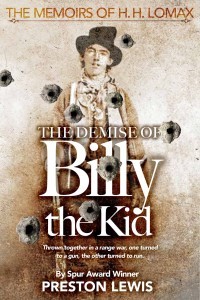 Here are the Amazon comments from previous editions:
Here are the Amazon comments from previous editions:
5 Stars, by Steven R. Hoover “Steve Hoover”on July 4, 2014: The “Lomax” books by Preston Lewis are funny and enjoyable.
5 Stars, Ride On Billy, by Stony Monday “Stony Monday”on April 6, 2014: This is one of the funniest books I have ever read. There are three in the series. The other two are about Wyatt Earp and Jesse James. Supposedly the author was actually there and he tells the story from his experiences. You must read the three books. As some old timers might say “they are a real kick in the pants!”
5 Stars, Great book, easy reading, lots of humor, good writing, by Robert Rodriguez on March 25, 2014: The book is very interesting. With some historical content. It made me think and laugh. Whether any of (it) is factual or not, it is worth reading. I wish that text books were written like that
5 Stars, Truly excellent read!, by JBP on June 8, 2013: I’m one of those people that didn’t expect a lot out of this book. Was I ever pleasantly surprised! Very personable story telling (and I don’t for a minute buy into some fellow named Lomax having all these papers from which the writer drew from ever existed…in fact, I don’t know if the writer actually existed!) No matter! One still gets a fictitious, though always amusing, romp through Lincoln County and some of its residents such as Billy the Kid, of course. This book had me laughing out loud. I kid you not. To me it was actually up on the same level of Larry McMurtry’s comical and tragic writings about the West. Yes, I would mention Lonesome Dove and many other of McMurtry’s books. If you like McMurtry, you’ll like this. If you haven’t read McMurtry, then I’d say read him too and particularly his westerns! This was a fun read!
4 Stars, by Linda Williamson December 18, 2001: I haven’t finished this book yet, but am about 2/3 done. I didn’t want to read it, but found nothing else around. I can hardly put it down! It tells the story of the Lincoln County War so convincingly from the viewpoint of H.H. Lomax, that I was driven to the Internet to learn more about the actual events. The writing is very descriptive and entertaining. I wish I’d read this before we went through Lincoln Co., I’d have paid closer attention.
5 Stars, Preston Lewis makes the Old West come alive, by A Customer on January 10, 1999: After reading one of Mr. Lewis’s books I found it to be wonderful. If the West was anywhere near what he writes, life was an adventure. I have his whole collection.
August 5, 2015
It Was In the Cards
Like most of my boyhood peers, I collected trading cards, most of which were baseball cards. But I did collect a few others, such as what I called “Outlaw Cards” back in the 1960s. Though all of my baseball cards have disappeared, except for one, I ran across my Outlaw Cards the other day while going through some of my childhood collectibles.
There is a certain irony that several of the cards feature Old West historical figures that have been major or peripheral characters in novels I have written, starting with Billy the Kid in The Demise of Billy the Kid, which is scheduled for republication this summer.
The Outlaw Cards were actually a card set named “Good Guys and Bad Guys.” Produced in 1966 by Leaf Trading Cards, the set included 72 cards, starting with Robert Ford, who shot Jesse James, as No. 1 (an odd choice for No. 1 in my mind) and Billy the Kid as No. 73, the last in the series. The company somehow skipped the No. 40 Card.
Of the 72 cards, I managed to buy and save 54 of the total at five cents a pack. Of the 54 I managed to keep, four were characters in Demise, including Pat Garrett, Tom O’Folliard and William Brady.
Each card has a rather garish portrait of the western celebrity on the front, along with his or her vital statistics and a brief bio on the back. No telling how many times I read the bios on the back, never realizing then that I would one day write novels using many of these same figures.
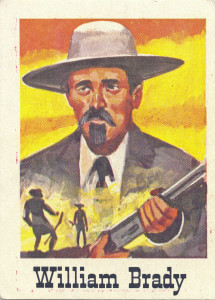 Perhaps I uncovered why I have always had trouble spelling the name of Wild Bill Hickok. I’ve always wanted to add another “c” before the last “k.” Well, Wild Bill’s last name is misspelled “Hickock” on his card, No. 34 in the series.
Perhaps I uncovered why I have always had trouble spelling the name of Wild Bill Hickok. I’ve always wanted to add another “c” before the last “k.” Well, Wild Bill’s last name is misspelled “Hickock” on his card, No. 34 in the series.
And perhaps, my interest in the Old West is partially a result of those cards and their mini-bios of well-known figures from the time.
July 29, 2015
Wings of Redemption
When I started the Memoirs of H.H. Lomax series, Bantam asked me to do one of the three books on Jesse James. I went along with the request even though Jesse James was not one of my favorite characters from the Old West.
While I was not as excited about this book as I was about the Billy the Kid and O.K. Corral books in the Lomax series, The Redemption of Jesse James actually became my favorite of the 30 books I have written. Jesse James is a peripheral character for most of the book, though Lomax does accompany him on his first bank robbery and visits him the day before he is shot. The book instead is a coming-of-age story about Lomax during the Civil War years.
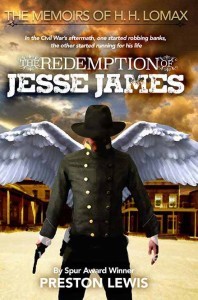
New Book Cover
What I like most about the book was the range of emotion from humor to pathos during a difficult time in American history. I made Lomax a Washington County, Arkansas, native since that was where my Lewis ancestors came from, and I could use some of my genealogy research for background. Because of all the bushwhackers and irregulars in northwest Arkansas during the war years, a family with Confederate leanings often shared homes with a family of Union sympathizers for their own mutual protection.
This forced cohabitation forms the basis for much of the conflict in Redemption as the Lomax Family takes in the neighboring Burke family, whose mother, three daughters and son support the Northern cause.
So, Redemption is not a typical western, and my new publisher came up with an unconventional cover for a western. At first, I was skeptical, but the publisher said the cover might be different enough to draw in readers who typically didn’t buy westerns. Eventually, the cover grew on me, but we’ll see how it goes over when it comes out later this year.
I am curious, however, about any reactions others might have, so please share.

